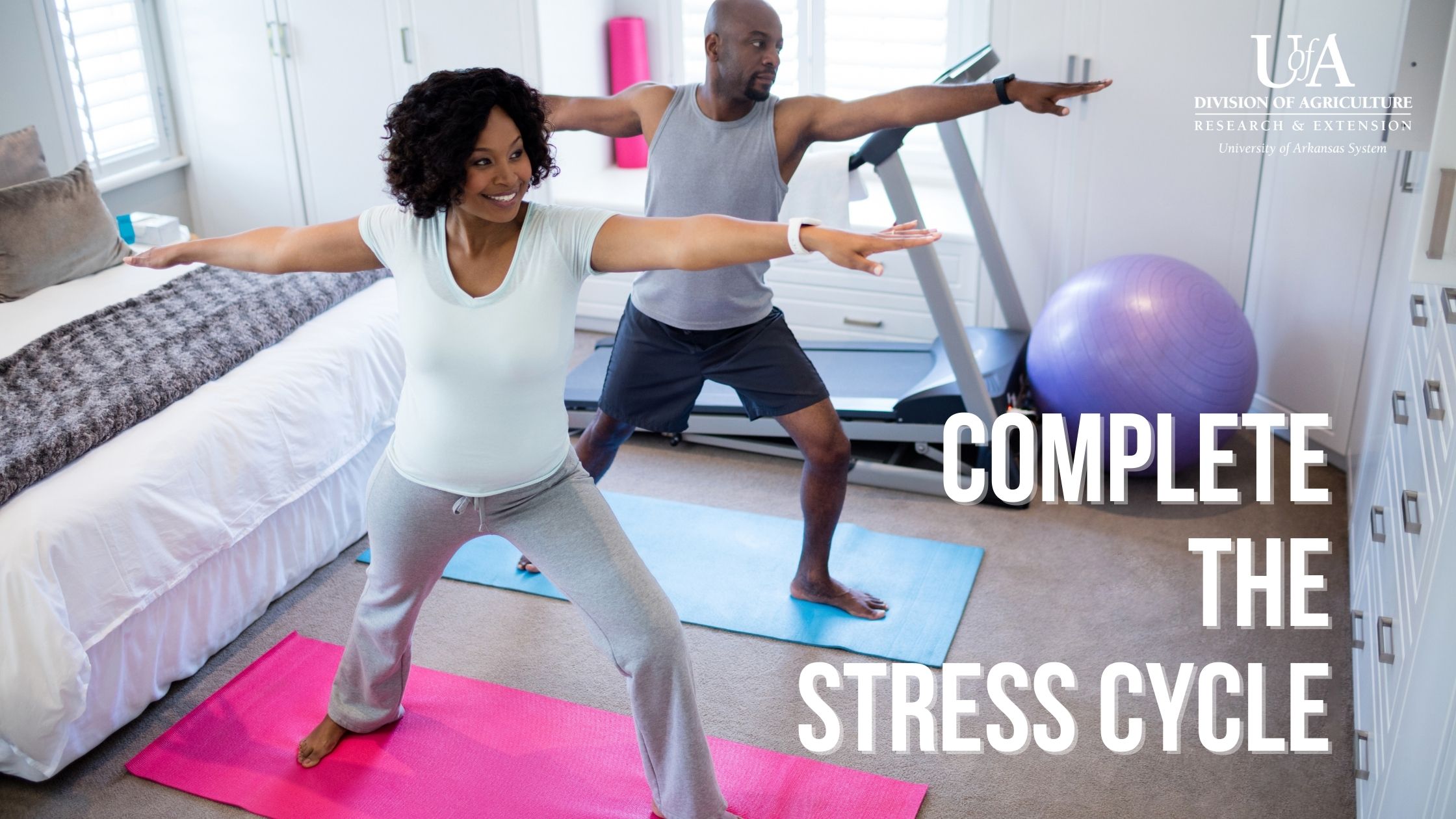Contact
Assistant Professor-Family Life Specialist
Phone: (501) 671-2202
Email: bschrick@uada.edu
University of Arkansas System Division of Agriculture
Cooperative Extension Service
2301 S. University Avenue
Little Rock, AR 72204

Complete the Stress Cycle
Stress. For many, stress is a constant state. It is hard on the body and the mind. It can cause health problems, emotional irritability, and a host of other concerns. Especially during the last two years, additional stressors related to the pandemic such as uncertain job security, school and business closures, and illness may have taken an extra toll. Taking time to destress, even if it is just a few minutes each day, can prevent burnout and help keep you physically and emotionally healthier.
In their book Burnout: The Secret to Unlocking Your Stress Cycle, authors Emily and Amelia Nagoski explain that your brain and body respond to stress by pumping hormones like cortisol into your system to help you escape danger. Those hormones can cause damage when you have high levels of them for a long time. Basically, your body is hardwired to respond to threats by pumping you full of chemicals that help you run away, hide, or otherwise stay safe. This becomes a problem when what you’re responding to isn’t really dangerous, but your brain tricks you into responding like it is.
For example, getting frustrated with a coworker who criticizes you can feel very stressful. That stress leads your brain to produce stress hormones that make you want to fight back or cry or quit your job. A way to make it through those tough times is to complete the cycle of stress by going through the emotions instead of backing away. Since your body is ready to fight, flee, or freeze, allow yourself to complete the stress cycle in a way that won’t cause you more trouble.
Here are 7 ideas to help you complete the stress cycle:
- Get moving:
Find a time to workout, go for a walk or a run, or even just do a few stretches or jumping jacks. If you are at work, walk up and down the hall or the stairs. If you work with children or are at home with your children, have a dance party! Stress is a physical experience, so physical activity often helps push through those emotions and work the stress hormones out. - Get Social:
Hang out with people you enjoy and who can help you process your stress. Call someone on the phone or FaceTime if you can't see anyone in person. - Breathe deeply:
Breathe through your stress and allow yourself to feel how you feel for a few minutes. - Cry:
Sometimes crying can be the best way through a stressful situation. It allows the emotions to run their course, and it is also a physical outlet for stress. If you are at work or with children, find a safe space to cry. - Laugh:
Watch cute videos, talk to a friend you know will make you laugh, or find some other way to laugh. Laughing, like crying, is a physical act that helps regulate hormones. - Hug and snuggle:
Get a big bear hug from a loved one or sit close to your partner or child. This type of contact releases oxytocin which helps relieve stress and increase happiness. - Be expressive:
Find a way to be creative. Journal, write a story, sing a song, create something for your home or office, do your favorite crafting activity. Creating also helps release feel-good hormones that can give you a boost and help you work through stress.
Next time you feel stressed, try to remember to complete the stress cycle. The best way out of a stressful situation is through it.
Other Resources:
Strengthen Your Brain with Gratitude
The book Burnout: The Secret to Unlocking the Stress Cycle by Emily Nagoski & Amelia Nagoski (2020; NY: Random House) is available at all major booksellers, online, and through your local library.